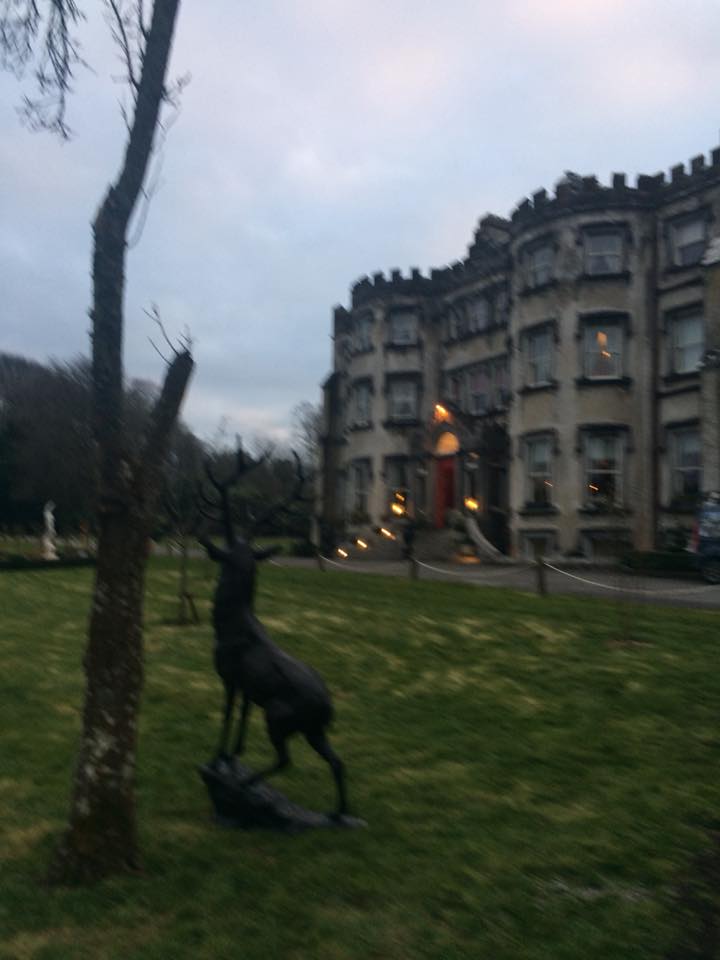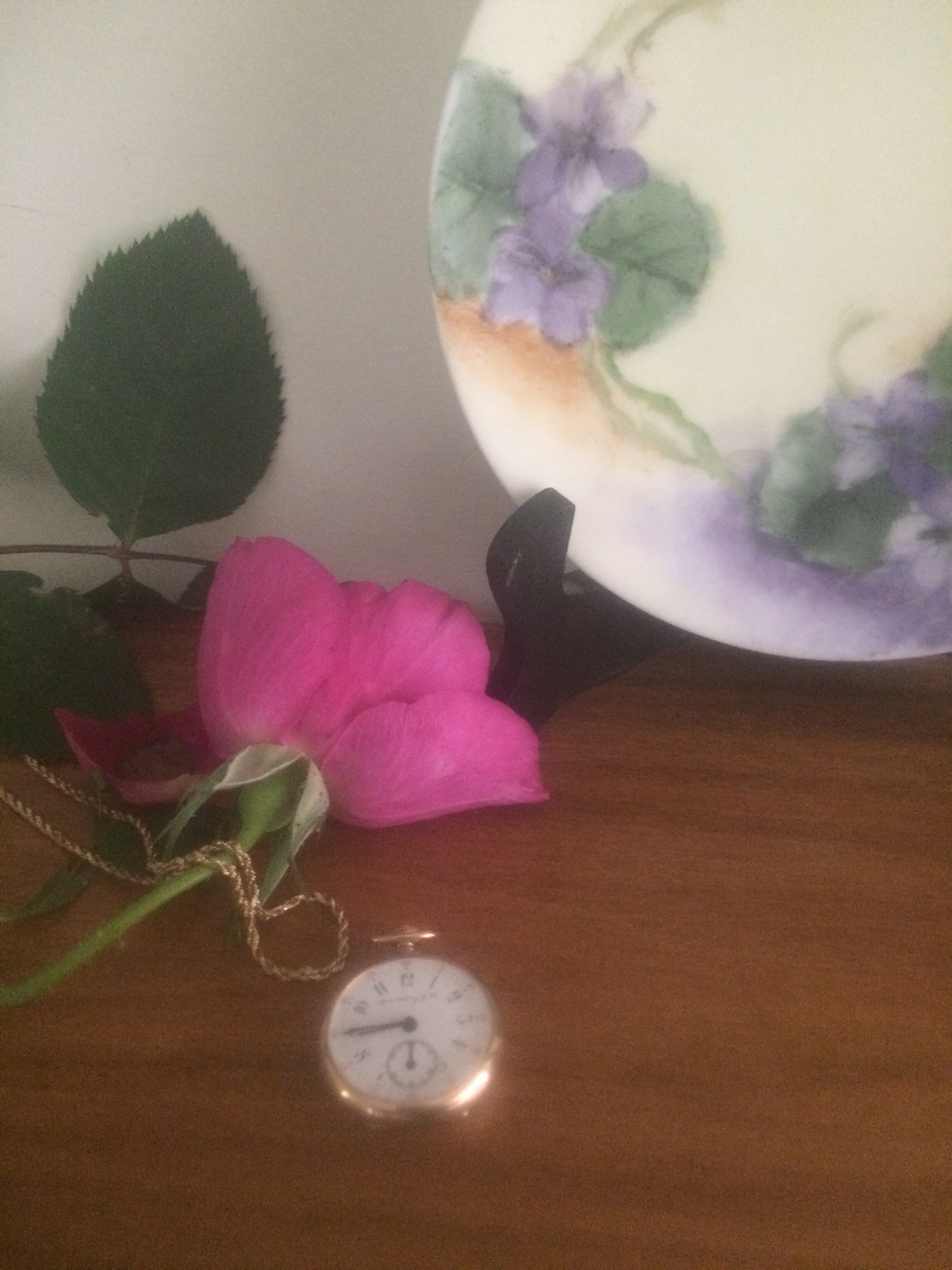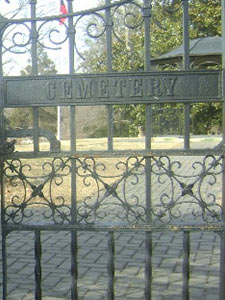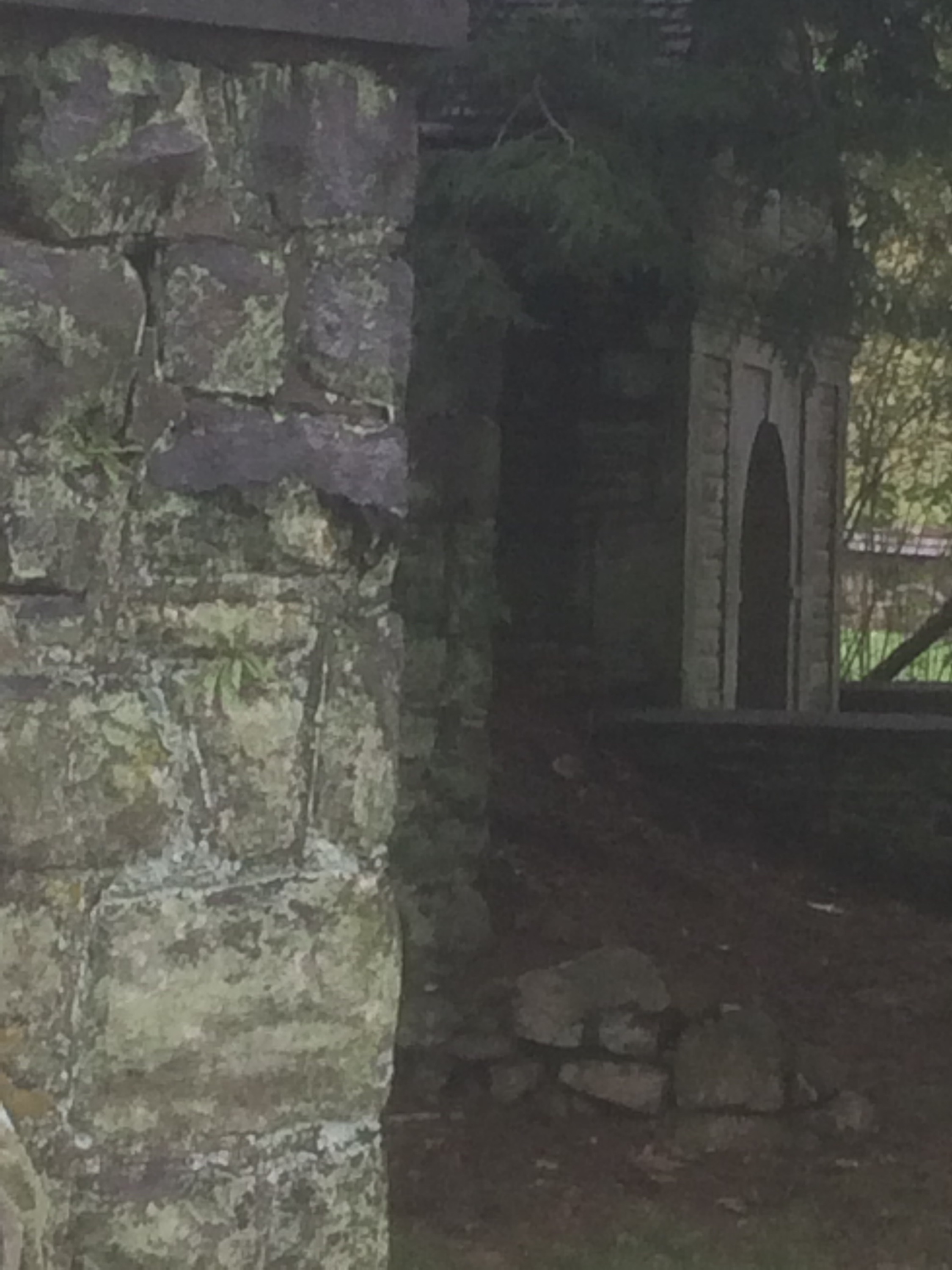Thanks, Mid-Michigan  Romance Writers of America!
Romance Writers of America!
The Dunluce Castle Banshee had proved a dud, no ghost nun had appeared on the Long Walk in Galway, and Robert Evans, hanged in 1803, wasn’t still hanging out at the Brazen Head in Dublin. Snow closed the pub and barred me from Leap Castle, the most haunted site on the Emerald Isle.
Only Ballyseede Castle remained on my self-guided pub-and-haunting tour of Ireland. I had high hopes. And I wasn’t disappointed: it proved a luxurious historic site and one of the most haunted castles in Ireland. A winding carriage road through woods opened to an expanse of green. The castle itself rises three full stories, with two curved bows at the front and a battlemented parapet.
Stag statues atop a gate and stone lions at the door guarded the entry, and inside the castle, suits of armor in the vestibule, plus Chippendale and Georgian décor galore. Marble columns led to a grand staircase. To the left were two Georgian drawing rooms with ornate plasterwork and working fireplaces, and to the right, a library/bar and formal dining room. I was escorted up three flights to a tower room, bigger than all the previous Airbnb rooms together. Hell, the bathroom was bigger than the entire Galway space. Guest rooms were named for writers and was assigned the Crosby room. When I returned home, I discovered it was the haunted bedroom, the one where the owner Hilda once lived. I didn’t know that then, but I discovered it was haunted on my own. More about that later.

Let me digress regarding the room, because I absolutely adore old houses. The Crosby room is huge. Its bow windows open to the green lawn, and the trees are lit eerily at night. Ceilings are perhaps 18 feet high. The wallpaper is figured red silk and gold. There’s a divan, a massive four-poster bed, a huge Elizabethan carved wardrobe, a Chippendale vanity, and a smaller twin bed in a corner. The bathroom looked to be Art Deco fixtures. I could have stayed forever.
But I wanted food and drink. Stripping my muddy hiking attire as fast as possible, I donned my little black dress, the one upscale outfit I’d brought, and elegantly descended the stairs looking like entirely and different redhead. Opting for the less formal library bar, I drank decent Cabernet and met an engaging caretaker/bartender and Einstein, a corgi-sheepdog mix. (I have no idea how that union was managed.) Einstein’s quirk was regurgitation. He’d spit out a mouthful of stones at our feet and wait for us to toss them for him to fetch. There were six stones in all. He was persistent.
All this entertainment and ambience PLUS the food was outstanding—oak plank salmon for me.
After dinner, I retired to one of the drawing rooms, where I entertained myself at the piano by trying out some “newest tunes” from 1928. To enjoy the full gamut of the haunted castle experience, I waited until near midnight and then took a self-guided tour, checking for reputed ghosts and checking out the basement book case. I chose a mystery with the word “dead” in the title, having finished my trite Harlequin on the train and a gruesome horror novel back in Dublin. The disapproving eyes of the many portraits hung all along the staircase stared as I made my way back to the Crosby room with the purloined book.
Then I enjoyed the spacious hot shower and Gilbert and Soames soap. It had been a very long day. Sighing in sheer luxury, I donned the terry robe, ate the complimentary chocolates, and tested out the acre-wide bed.
My book proved to be well written, but I hadn’t slept the night before and knew there’d be miles of hiking on the morrow, so at last I turned out the light and tried to snuggle into the enormous bed. Although the room grew chilly (the window was cracked open), I like a cold room, and the blankets weighed heavy. All was extraordinarily quiet. I slept at last.
And woke screaming. Now that never, ever happens. Ask my family. I may snore. Sometimes I sing in my sleep. I haven’t had nightmares for decades. But something dragged me by my leg. I think I dreamed it. I hope I dreamed it. I can still feel it.
Remember, I didn’t know the Crosby room was the haunted bedroom. I was thrilled with the ambiance, overtired from travel and a sleepless night in Galway, and drowsy from great food and two glasses of wine. And I don’t scare easy. Hey, I write paranormal romances for a living.
Eventually I wrote the sensation off as a nightmare and went back to sleep, waking to–at last–a sunny, snow-free day. When I opened the window, I watched Irish wolfhounds gambol on the green. After a fortifying Irish breakfast of four kinds of meat and terrific breads, I fed most of the meat to Einstein and stomped about the grounds until it was time to leave.
I’d go back to Ballyseede tonight if I could pull it off. Feeling guilty for taking the book, I confessed as I paid the bill and later sent my three Something in the Dark novels to fill their shelves.

1. ___ Apiphobia
2. ___ Coulrophobia
3. ___ Dipsophobia
4. ___ Lilaphobia
5. ___ Metrophobia
6. ___ Ophindiophobia
7. ___ Phasmophobia
8. ___ Pogonophobia
9. ___ Scoleciphobia
10. __ Selachophobia
11. __ Triskaidephobia
12. __ Tyrannophobia
13. __ Venustraphobia
________________________________________________________________
a. Fear of sharks
b. Fear of beards
c. fear of beautiful women
d. Fear of snakes
e. Fear of the number 13
f. Fear of bees
g. Fear of poetry
h. Fear of worms
i. Fear of drinking
j. Fear of clowns
k. Fear of ghosts
l. Fear of hurricanes
m. Fear of tyrants
1f, 2j,3i,4l,5g,6d,7k,8b,9h,10a,11e,12m, 13c
I know, all ghost stories promise that they truly happened. But this one did. Really.
A relative of mine by marriage had been hospitalized for weeks. He finally reached the critical phase. Frantic, his wife asked me to come to the hospital, where she suddenly decided it was time to pull the plug. Once she’d decided, she wanted it done immediately. She couldn’t, however, bring herself to be in the ICU when her husband died.
My relationship with him was less than congenial, but I was prevailed upon to stand by for his last moments. He glared at me until he could no longer see. His grasp on my hand left red marks.
Afterward, not wanting to leave the widow alone in an empty house, I stayed the night. She fell asleep, exhausted, and I settled down on the lumpy pull-out couch. Then I heard it: a low electric rumble from the stairwell. First came a click, then a hum, then a click.
The stairlift the deceased had once used daily was operating on its own.
His widow staggered to the base of the stairs. Eyes wide, together we watched the machine go up and down with no one in it.
“Has it ever done this before?” I asked.
She shook her head. “Never. Oh, God, is it him? Is he angry?”
“It’s a fluke,” I said firmly, putting my arm around her trembling shoulders and squeezing. Leaving her side, I toggled the stairlift switch to be sure it had been shut off properly. All was in order. We checked the plug, thinking there might be a short.
Nothing.
Still, we didn’t give in to our fears. The house stood near a saltwater canal. I remembered from an experiment in Mr. Mariner’s science class that salt water is a good conductor of electricity.
Convincing ourselves that was the explanation, we unplugged the stairlift. Without even a stutter, it continued to climb the stairs, pause, and return. The light at its base glowed yellow in the darkness.
I swore. The chair continued to hum and ascend, never slowing, never wearing down. For hours, the stairlift persisted on its relentless track.
It took a hammer and a screwdriver to make it stop.
Years have passed. The machine has been repaired now. It’s useful for hauling laundry baskets. Now the stairlift goes up and down when we want it to. Only on the night its passenger died did it make its ghostly run.
A pocket watch from Hiroshima had its hands blown off by the nuclear blast, but the time of its owner’s death was embossed forever on the clock face: 8:15. In Amatrice, Italy, a medieval tower stopped at the time the 2017 earthquake killed 250. Dickens understood the symbolic power of arrested time in Great Expectations: “There was a clock in the outer wall of this house. Like the clock in Miss Havisham’s room, and like Miss Havisham’s watch, it had stopped at twenty minutes to nine.” Faulkner’s Emily Grierson kept time on a leash, hidden in the folds of her dress. Her poisoned lover she kept mummified in her bed.
Of course, clocks stop on their own too. I gave up wearing one because, no matter what kind I purchased, it stopped running within days, sometimes hours. When I toured the Rhine Research Center, a paranormal expert studying electromagnetic fields said he had the same problem. Some people blame the spirit world.
People in my neck of the woods stop a clock when someone dies to block bad luck, possibly another death. In Seeing Things, Mary Catherine worries when her employer gives up the ghost, lamenting, “I hadn’t been in the room to stop the clock.” Bad luck was sure to follow her.

What horror movie features each of these key items?
- Room 217
- Fruit cellar
- Georgetown staircase
- Red balloon
- Hockey mask
- Trees decorated with stick figures
- Baboons gone wild
- Rapacious vine
- Masonry trowel
- Bucket of pig blood

Excerpt from Sensing Things:
In that cemetery, I’d twice encountered a darkness as cold as death—once after my employer’s funeral in December and that first time, when as a kid I’d hidden in an empty mausoleum only to find it wasn’t empty after all . . . .
The blocklike stone building D.J. was pointing to was a mausoleum, the same mold-crusted mausoleum where I’d played hide and seek that fateful summer before my mother died. It was the same mausoleum where I’d hidden from Carrie and where I’d found out too late that something else had been hiding too. I rubbed the spot on my arm where, long ago, the fingerlike bruises from that encounter had marred my skin for months. This was the mausoleum I visited in my nightmares. The very last thing I’d wanted was at hand.
“Wait, kiddo,” I breathed. “Don’t go down there.” A wave of nausea swept over me. Even my voice shook. “It’s not safe.”

Copyright © 2025 All Rights Reserved
